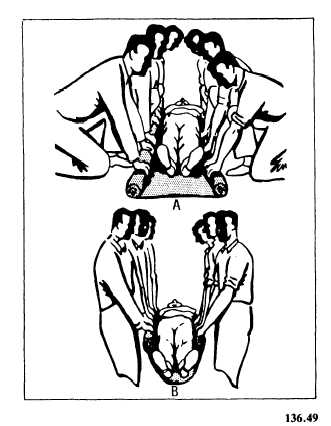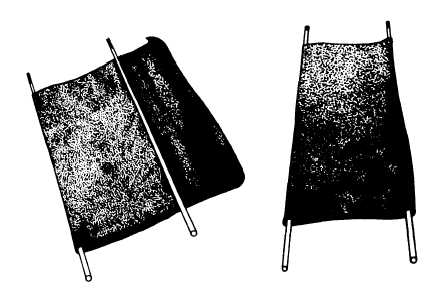
Figure 4-80.—Blanket used as an improvised stretcher.
around the casualty mummy-fashion, it gives sufficient support for a vertical lift (fig. 4-79). A guideline is tied to the bottom ring to keep the casualty from swaying against bulkheads and hatchways while being lifted.
Stretchers of this type can be made on board ship and kept in appropriate places ready for use. If a Neil Robertson stretcher is not available when needed, a piece of heavy canvas, wrapped firmly around the casualty, will serve somewhat the same purpose. Periodically check your ship’s Neil Robertson stretchers for dry rot or other damaged caused by humidity, sea water, or handling.
IMPROVISED STRETCHERS.— Standard stretchers should be used whenever possible to transport a seriously injured person. If none are available, it may be necessary for you to improvise. Shutters, doors, boards, and even ladders may be used as stretchers. All stretchers of this kind must be very well padded and great care must be taken to see that the casualty is fastened securely in place.
Sometimes a blanket may be used as a stretcher, as shown in figure 4-80. The casualty is placed in the middle of the blanket in the supine position. Three or four people kneel on each side and roll the edges of the blanket toward the casualty, as shown in figure 4-80A. When the rolled edges are tight and large enough to grasp securely, the casualty should be lifted and carried as shown in figure 4-80B.
Stretchers may also be improvised by using two long poles (about 7 feet long) and strong cloth, such as a rug, a blanket, a sheet, a mattress cover, two or three gunny sacks, or two coats. Figure 4-81 shows an improvised stretcher made from two poles and a blanket.

Figure 4-81.—Improvised stretcher using blankets and poles.
